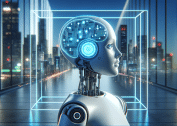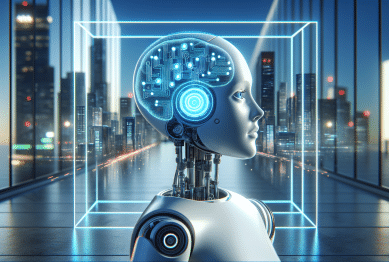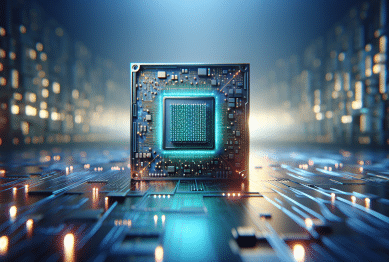Explore how artificial intelligence is weaving itself into daily routines and major industries. This guide reveals the surprising ways AI tools, from voice assistants to healthcare algorithms, are quietly transforming daily life and what emerging technology trends are worth noting.
Understanding Artificial Intelligence in Modern Contexts
Artificial intelligence, often shortened to AI, describes a variety of computer systems designed to mimic aspects of human intelligence. From solving complex problems to recognizing voices and images, AI adapts rapidly. Most people encounter this technology every day. For example, recommending songs on streaming services or curating content on social media platforms relies on AI-based recommendation engines. Integration of machine learning and natural language processing allows these systems to learn from vast amounts of data, changing how people interact with digital spaces. This shift isn’t limited to personal devices. AI also powers e-commerce suggestions, fraud detection in finance, and innovative tools in education.
At its core, AI processes information at speeds that far outpace human capability. High-performance algorithms analyze massive datasets for patterns or predictions that enable organizations to anticipate customer preferences, respond to market changes, or automate repetitive tasks. The combination of AI and big data is transforming the workplace by enabling smarter resource allocation and streamlining operations. For instance, advanced supply chain solutions employ predictive analytics to minimize waste and optimize delivery routes. Such use cases highlight the expansive influence of artificial intelligence across diverse domains.
Emerging innovations in AI include fields like computer vision, natural language generation, and speech recognition. Companies develop virtual assistants capable of reading user intent, improving customer support workflows, and reducing response time. On another front, deep learning advances the accuracy of image recognition, powering applications like diagnostic imaging in healthcare and facial recognition in security. The evolving landscape of AI continues to inspire new industries while challenging existing ethical and technical boundaries. As this technology matures, its role in modern society expands rapidly, offering chances for collaboration and adaptation.
Everyday AI: Tools Already Touching Your Life
Many daily conveniences owe their smooth functioning to artificial intelligence, even when it’s hidden beneath the surface. Smart home devices such as thermostats and lights use AI-driven sensors and algorithms to automatically adjust for comfort and energy efficiency based on user routines. Meanwhile, navigation applications process real-time traffic information and suggest optimal routes—a vital blend of AI mapping, machine learning, and predictive analytics. Simple reminders, like prompting users to leave for appointments, reflect how technology is becoming more anticipatory and helpful.
Online shopping demonstrates another layer of AI use. Algorithms analyze past searches and purchases so that users receive personalized product recommendations. These systems not only improve the chances of finding something relevant, but they also streamline decision-making for busy individuals. Similar AI-backed engines power music streaming platforms, providing tailored playlists that evolve as taste preferences change. This customization extends to entertainment, fitness, and financial planning apps, showing the versatility of such technology.
Natural language processing technology allows virtual assistants like Siri, Alexa, or Google Assistant to interpret and execute spoken commands. These tools manage schedules, relay weather updates, and offer information from web searches using conversational interfaces powered by AI. Advances in voice recognition and contextual understanding mean these assistants are becoming more intuitive and accurate. The prevalence of such technologies demonstrates how artificial intelligence is quietly woven into countless everyday interactions, illuminating the blend of convenience and complexity they provide.
The Role of AI in Healthcare Transformation
Healthcare innovation is being fueled by artificial intelligence at multiple levels. Algorithms analyze electronic health records, highlight at-risk patients, and assist clinical staff with diagnostic support. For example, AI systems review scans such as X-rays or MRIs, identifying possible signs of illness faster than traditional methods. This approach can lead to earlier interventions and more precise treatments (Source: https://www.nih.gov/news-events/ai-precision-medicine).
Outside hospital settings, wearable health technology and fitness trackers leverage machine learning to monitor vital signs, detect unusual patterns, and send personalized alerts. This empowers individuals to manage chronic conditions with better data, while medical professionals gain deeper insights between appointments (Source: https://www.cdc.gov/nchs/pressroom/nchs_press_releases/2022/20221123.htm). Innovations in telehealth, where remote consultations use AI-driven symptom checkers, further expand care access for diverse populations. These advances support early diagnosis and more efficient treatment plans.
On a broader scale, AI serves public health by tracking disease outbreaks and monitoring environmental risks. Sophisticated models can simulate how scenarios unfold, allowing researchers and administrators to respond proactively. By analyzing global data sources, artificial intelligence supports evidence-based decision-making that improves outcomes on both local and global scales. Even with its remarkable potential, ethical considerations, data privacy, and patient consent remain essential topics as digital health technology continues to mature.
Artificial Intelligence Advancing Education and Learning
Education benefits from AI through personalized curriculum design, intelligent tutoring systems, and dynamic assessments. Digital platforms now analyze students’ learning styles, gaps, and progress to tailor resources for greater individual impact. Adaptive learning tools recommend specific exercises or lessons, helping students master concepts at their own pace (Source: https://www.ed.gov/ai-in-education). Schools and universities are adopting these systems to bolster both engagement and achievement.
Artificial intelligence makes education more inclusive by supporting learners with disabilities. AI-powered transcription, translation, and text-to-speech applications remove traditional barriers, enabling wide participation. Students gain independence using these tools, and educators monitor broader trends to optimize classroom strategies (Source: https://www.washington.edu/doit/artificial-intelligence-and-accessibility). These innovations expand opportunities for all learners, fostering environments that adapt to diverse needs.
Beyond formal education, AI is at the heart of lifelong learning platforms. Online courses employ recommendation engines and progress tracking to keep users motivated. Some institutions also utilize AI for administrative efficiency, automating grading and data management tasks, freeing up time and resources for personalized instruction. As artificial intelligence systems continue to evolve, their integration into education reflects a commitment to accessibility, consistent feedback, and student-centric models of learning.
AI Ethics, Bias, and the Importance of Responsible Technology
With the rise of artificial intelligence, ethical concerns grow more prevalent. Questions about algorithmic bias, privacy, and decision transparency are subject to international debate. AI models trained on biased or incomplete data sets may reinforce unfair patterns, influencing areas like hiring, lending, or criminal justice. Addressing these challenges requires oversight, transparent design, and ongoing assessments (Source: https://www.nist.gov/artificial-intelligence).
Developers and policymakers promote fairness through guidelines and regulatory frameworks. Initiatives from international organizations emphasize the need for algorithms that can be explained and audited. Some companies participate in external audits to reduce risks of discrimination or error. Wider conversations also call for diversity in tech teams and community consultation during development phases, ensuring solutions meet social and ethical needs rather than perpetuating outdated stereotypes.
User privacy is another major concern as AI systems handle increasing amounts of sensitive information. Careful data governance, robust encryption, and clear consent protocols are now standard practice. Public education about rights and responsibilities is essential to maintaining trust as dependence on AI grows. Collaborative efforts between government, industry, and civil society can lay the foundation for ethical, sustainable technology, emphasizing respect and accountability in all uses of artificial intelligence.
Looking Forward: Trends and Challenges in Artificial Intelligence
Artificial intelligence promises extraordinary growth, yet it also presents unique challenges. As technology advances, so do expectations for systems to be accurate, adaptable, and fair. Research efforts intensify around reinforcement learning, computer vision, and autonomous systems. Self-driving vehicles, for example, depend on real-time decision-making that must balance safety and efficiency while navigating complex environments. Industries ranging from logistics to finance continue exploring AI for gains in productivity and innovation (Source: https://www.brookings.edu/research/ai-future-of-work).
The growing impact of AI in cybersecurity demonstrates its defensive and offensive capabilities. Machine learning algorithms can identify network threats and defend against cyberattacks, but, in turn, adversaries also use AI to exploit vulnerabilities. This ongoing battle shapes the evolving landscape of digital security and encourages constant research and vigilance among professionals. Trends like federated learning, which trains models without transferring raw data, seek to balance data use and privacy, promising future breakthroughs in distributed intelligence.
Finally, the social role of artificial intelligence cannot be overlooked. Widespread adoption raises new questions about employment, access to technology, and social equity. Preparing the workforce through upskilling initiatives and fostering digital literacy will be critical to minimizing disruption and sharing benefits broadly. Success depends on collaboration—bridging technical, ethical, and policy perspectives through global dialogue that shapes the course of this transformative field.
References
1. National Institutes of Health. (n.d.). AI and Precision Medicine. Retrieved from https://www.nih.gov/news-events/ai-precision-medicine
2. Centers for Disease Control and Prevention. (2022). National Health Interview Survey Early Release. Retrieved from https://www.cdc.gov/nchs/pressroom/nchs_press_releases/2022/20221123.htm
3. U.S. Department of Education. (n.d.). Artificial Intelligence in Education. Retrieved from https://www.ed.gov/ai-in-education
4. University of Washington. (n.d.). Artificial Intelligence and Accessibility. Retrieved from https://www.washington.edu/doit/artificial-intelligence-and-accessibility
5. National Institute of Standards and Technology. (n.d.). Artificial Intelligence. Retrieved from https://www.nist.gov/artificial-intelligence
6. Brookings Institution. (n.d.). AI and the Future of Work. Retrieved from https://www.brookings.edu/research/ai-future-of-work









